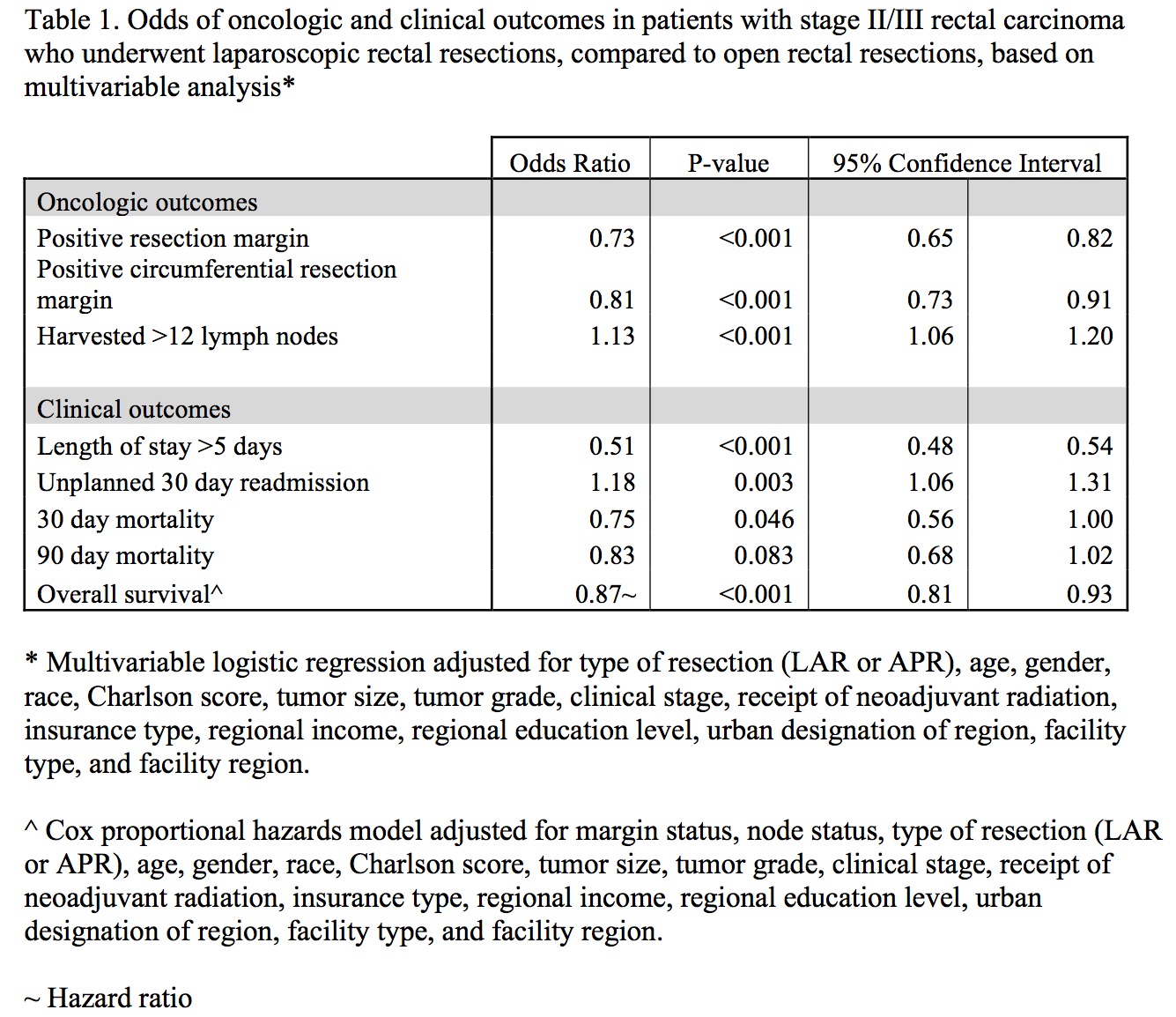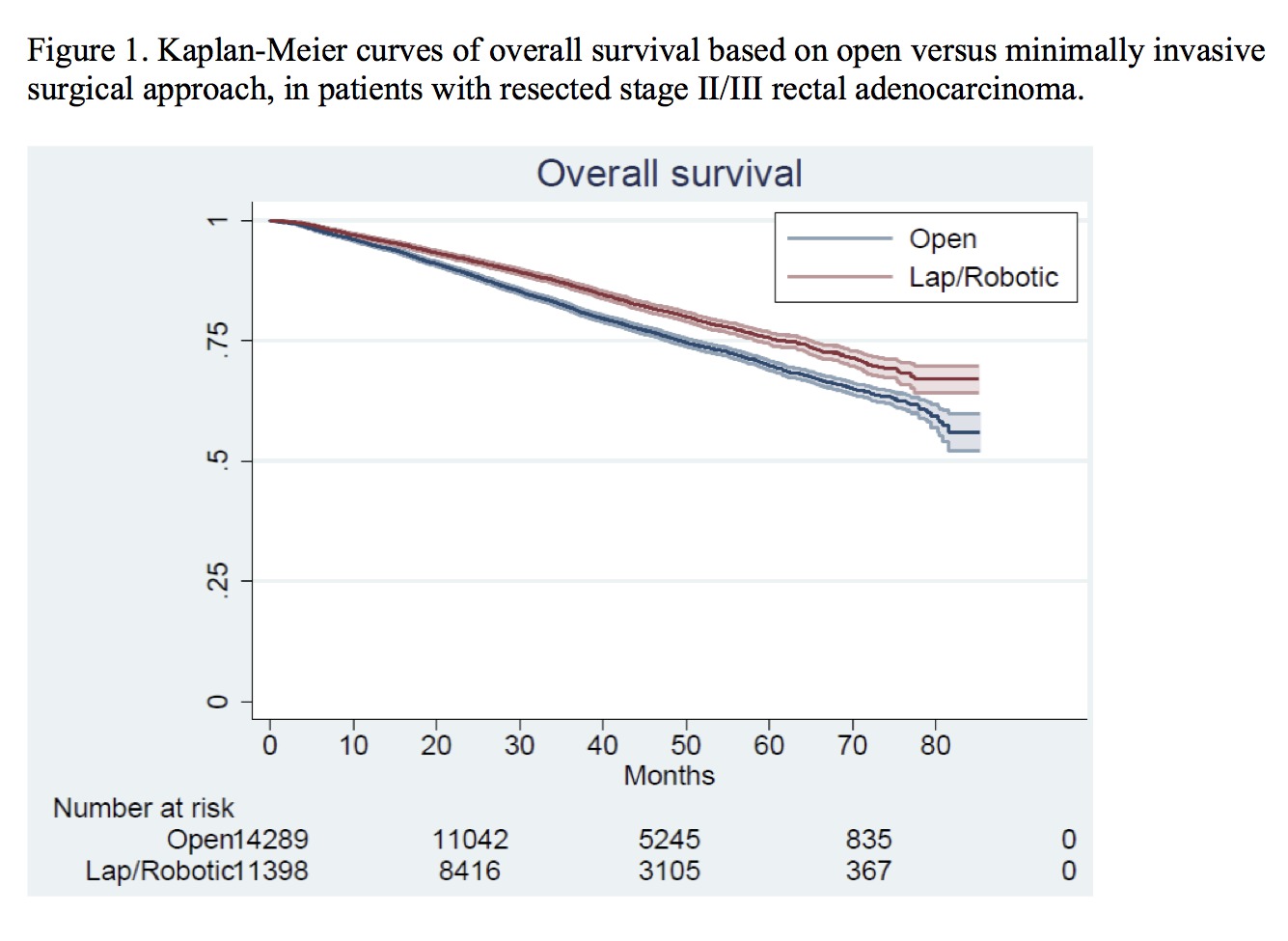
|
 |
Back to 2018 Posters
SUPERIOR CLINICAL AND ONCOLOGIC OUTCOMES AFTER MINIMALLY-INVASIVE RECTAL RESECTION, COMPARED TO OPEN RESECTION
Grace C. Lee*1,2, Liliana G. Bordeianou1, Todd D. Francone2,1, Lawrence S. Blaszkowsky2, Theodore S. Hong2, David C. Chang1, Rocco Ricciardi1,2, Hiroko Kunitake1, Motaz Qadan1,2
1Surgery, Massachusetts General Hospital, Boston, MA; 2Newton Wellesley Hospital, Newton, MA
Background:
The ACOSOG and ALaCaRT trials determined that laparoscopic resections for rectal cancer failed to meet non-inferiority criteria when compared with open resections. In contrast, the COLOR II and COREAN studies were able to demonstrate non-inferiority, leading to uncertainty regarding the value of minimally invasive (MIS) techniques in rectal surgery. We performed a retrospective analysis to investigate differences in clinical and oncologic outcomes between patients who underwent open versus MIS resections for rectal cancer.
Methods:
We identified a cohort of patients who underwent low anterior resection, proctectomy, or abdominoperineal resection for stage II or III rectal adenocarcinoma from the National Cancer Database (2010-2015). Surgical approach was categorized as open or MIS (defined as laparoscopic, laparoscopic converted to open, robotic, or robotic converted to open). Patient, institutional, and tumor characteristics were recorded. Differences in clinical outcomes, oncologic outcomes, and overall survival were assessed using logistic regression and Cox proportional hazard models. Analysis was performed in an intention-to-treat fashion.
Results:
A total of 31,190 patients who underwent resection for rectal adenocarcinoma were identified and followed for a median time of 36.9 +/- 18.8 months. Of the cohort, 16,455 (52.8%) patients underwent open resection, and 14,735 (47.2%) underwent an MIS approach. Of the MIS patients, 9,682 (65.7%) underwent a laparoscopic or laparoscopic converted to open operation and 5,053 (34.3%) underwent a robotic or robotic converted to open procedure.
After adjustment for patient characteristics, institutional characteristics, tumor size, tumor grade, clinical stage, and receipt of neoadjuvant radiation, we found that the MIS approach was associated with significantly decreased risk of positive circumferential resection margin (OR 0.81, 95% CI 0.73-0.91, p<0.001), increased likelihood of harvesting >12 lymph nodes (OR 1.13, 95% CI 1.06-1.20, p<0.001), decreased chance of length of stay >5 days (OR 0.51, 95% CI 0.48-0.54, p<0.001), and lower 30-day mortality (OR 0.75, 95% CI 0.56-1.00, p=0.046). MIS techniques were associated with an increased risk of unplanned readmission within 30 days (OR 1.18, 95% CI 1.06-1.31, p=0.003). The MIS approach was also associated with improved overall survival (HR 0.87, 95% CI 0.81-0.93, p<0.001).
Conclusions:
The MIS approach to rectal resection for cancer was associated with improved clinical and oncologic outcomes when compared to the open approach, even after adjusting for patient, institutional, and tumor characteristics. In this large, real-world, facility-based sample of 70% of all newly diagnosed cancer cases in the United States, our data suggest superiority of MIS techniques for rectal cancer treatment.


Back to 2018 Posters
|


